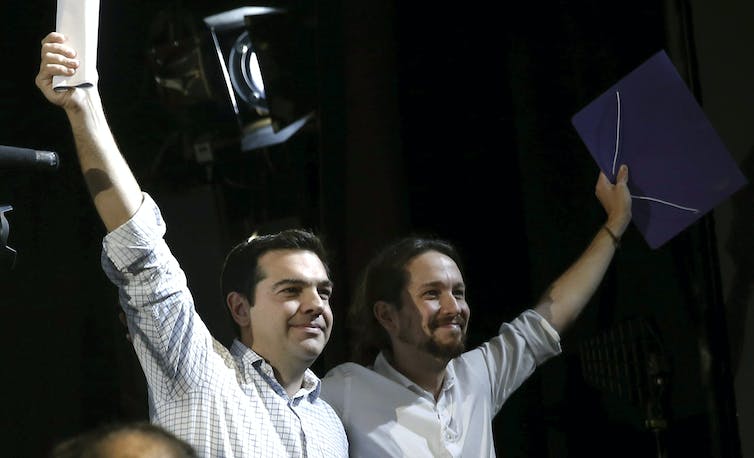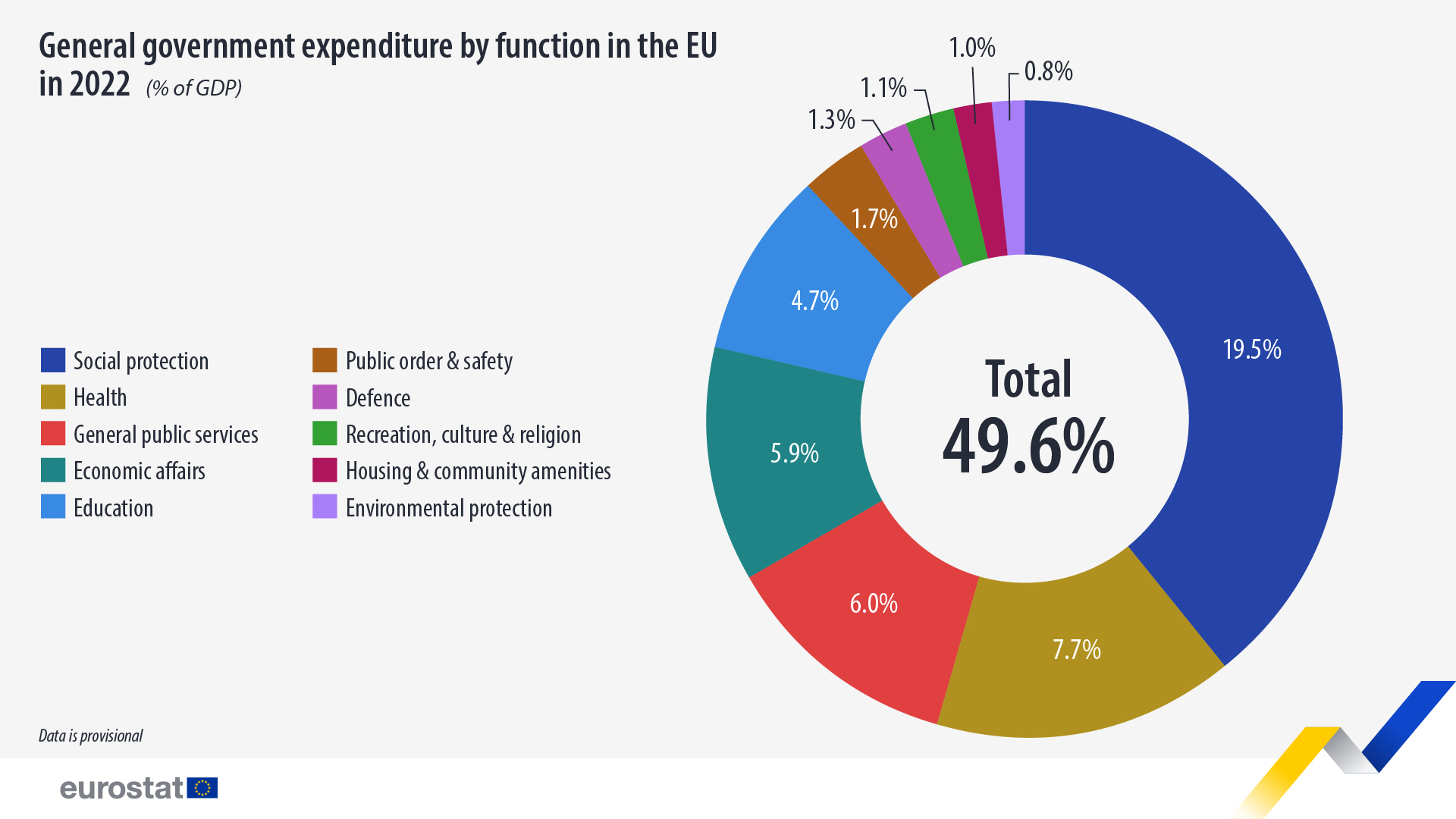With roughly six months to go, the radical right looks set to make significant gains in the 2024 European elections. The biggest share of votes is still likely to go to parties of the centre-right, but many of these have lately veered rightward, too.
Meanwhile, the European parliament’s radical left group is failing to make meaningful headway among voters looking for an alternative. It is predicted to increase its number of seats in the 2024 elections, but will remain the smallest group in the parliament.
Radical left parties did experience something of a surge during the eurozone crisis of the 2010s. Parties such as Syriza (from Greece), Podemos (from Spain) and the Left Bloc (from Portugal) rose to prominence in the countries most affected by the crisis.
They capitalised on popular dissatisfaction with mainstream parties and the EU establishment, which was enforcing austerity in member states. This also translated into gains in the 2014 European elections, when the Left group increased its number of MEPs by 50%.
But these electoral breakthroughs did not put an end to austerity, even in Greece, the one country where the radical left managed to come first in elections. In July 2015, after merely six months in power, Greece’s Syriza-led government agreed to further austerity and privatisation in exchange for a fresh bailout from international creditors.
The radical left failed to significantly challenge the EU’s “embedded neoliberalism”. Instead, in the years since, and with the new crises engulfing Europe (COVID, cost of living, war), the radical right has been the main beneficiary of the anti-establishment mood.
My recent book argues that if the radical left has not managed to provide a strong alternative to the neoliberal status quo in an era when people continue to seek such alternatives, it is in part because of its limited cohesion and coordination at transnational level. Several factors help explain this puzzle.
A radical left paradox
At least on paper, the radical left is the most internationalist party family in the European parliament. Its very existence stems from the understanding that capitalism is an international system that cannot be defeated on a national basis alone.
Paradoxically, though, the radical left has never been great at transnational party cooperation at EU level. It faced bigger challenges than others in establishing and maintaining a group in the European parliament, which remains a rather heterogeneous organisation.
Given the transnational character of the eurozone crisis and its austerity-centred management, the radical left had the opportunity to improve its underwhelming transnational cooperation. By focusing on parties from three of the countries most affected by the crisis – Greece, Portugal and Spain – we can see why that opportunity was missed.
EPA
The preeminence of domestic over European politics hinders transnational party cooperation in general, but particularly on the radical left. As parties struggle to be electorally relevant in the domestic arena, they pay less attention to European politics.
In turn, they have less influence over EU policymaking, which reinforces the prioritisation of domestic politics. As one of my interviewees bluntly put it: “When it comes to the moment of truth, each one is with their own electorate”.
The widely noted lack of a European “demos”, or shared political identity, also disproportionately hampers the radical left at the EU level. Radical left parties rely more on mass mobilisation than other parties. During the crisis, they allied themselves with the anti-austerity mass movements in their countries and capitalised electorally on that linkage.
But that kind of mobilisation was very limited at transnational level. As another interviewee remarked: “I don’t think that there is European workers’ solidarity and I think it’s becoming more and more difficult to build one.”
At the same time, radical left parties have been doing relatively little to facilitate such solidarity. They limit their transnational cooperation to party elites and EU institutions – the very establishment they often purport to challenge.
If, on a domestic level, radical left parties have understood that only by drawing on mass movements can they become credible alternatives to mainstream parties, they have failed to employ this protest strategy at a European level.
Disagreements over direction
Parties of the radical left have long been divided over the EU. Some advocate EU reform while others want a complete break from Brussels.
These fractures only deepened during the financial crisis of the 2010s. Tensions were particularly high in the aftermath of Syriza’s U-turn in government, which further entrenched the position of hard eurosceptics that leftwing policies are incompatible with the EU’s institutional architecture.
That cleavage also widened as a new position emerged among parties such as the Portuguese Left Bloc and La France Insoumise. They call for neither reform nor exit from the EU but “disobedience” towards the neoliberal aspects of EU legislation – such as the general prohibition on state aid – that would prevent the implementation of leftwing policies.
The fox in the chicken coop: how the far right is playing the European Parliament
This divergence was seen in the European elections of 2019, when the radical left stood competing lists of candidates in several member states. This is likely to occur again in 2024.
If anything, the radical left’s lack of cohesion has been exacerbated by recent developments, such as the war in Ukraine. Some parties want to provide unconditional support to Ukraine while others “critically” defend Russia’s position. Others support neither side in what they see as a fundamentally “inter-imperialist conflict”.
While the more structural factors are hard to overcome, the ideological differences at play might not be fundamental enough to justify the current level of fragmentation on the radical left. Ideally, differences could be played out within a common transnational project that would coalesce the parties around a shared vision for Europe. In the absence of that, it’s likely that voters disillusioned with the status quo will be lured away by rightwing populism instead.




